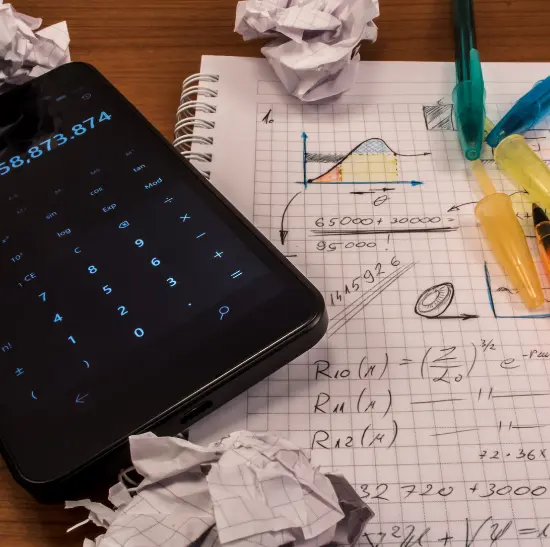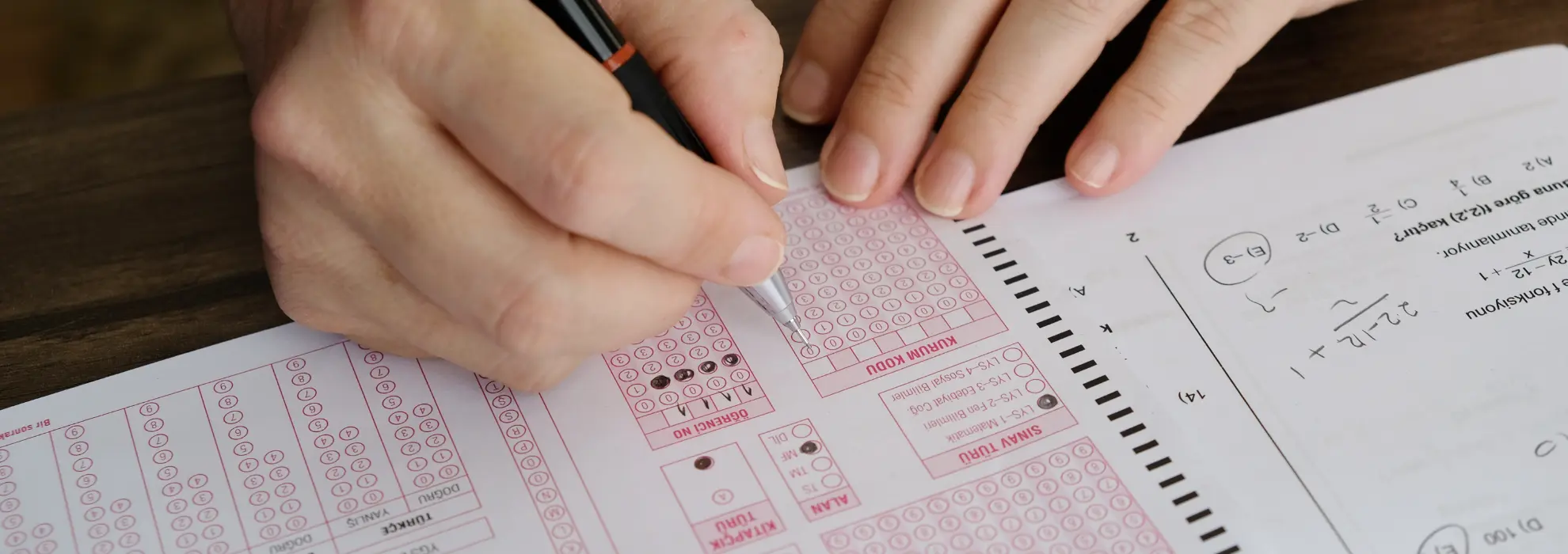
AP Calculus BC Tutoring for High Scores and Concept Mastery
Embark on a transformative learning journey with my affordable online AP Calculus BC tutoring. AP Calculus BC is designed to be the equivalent to both first and second semester college calculus courses. AP Calculus BC applies the content and skills learned in AP Calculus AB to parametrically defined curves, polar curves, and vector-valued functions; develops additional integration techniques and applications; and introduces the topics of sequences and series. You'll develop skills in problem-solving and mathematical reasoning, preparing you thoroughly for the AP exam.
How It Works
Initial Consultation
We’ll start with a consultation to understand your current level, goals, and specific areas of difficulty.
Customized Learning Plan
I’ll create a personalized plan tailored to your needs, ensuring focused and effective learning.
Regular Sessions
We’ll have regular online sessions where I’ll guide you through the AP Calculus AB curriculum, ensuring you understand each concept thoroughly.
Continuous Feedback
I provide ongoing feedback and progress assessments to keep you on track and motivated.
Course Content
Topics include:
- Introducing Calculus: Can Change Occur at an Instant?
- Defining Limits and Using Limit Notation
- Estimating Limit Values from graphs
- Estimating Limit Values from tables
- Determining Limits Using Algebraic Properties of Limits
- Determining Limits Using Algebraic Manipulation
- Selecting Procedures for Determining Limits
- Determining Limits Using the Squeeze Theorem
- Connecting Multiple Representations of Limits
- Exploring Types of Discontinuities
- Defining Continuity at a point
- Removing Discontinuities
- Confirming Continuity over an Interval
- Connecting Infinite Limits and Vertical Asymptotes
- Connecting Limits at Infinity and Horizontal Asymptotes
- Working with the Intermediate Value Theorem (IVT)
On The Exam 4–7% of exam score
Topics include:
- The Chain Rule
- Implicit Differentiation
- Differentiating Inverse Functions
- Differentiating Inverse Trigonometric Functions
- Selecting Procedures for Calculating Derivatives
- Calculating Higher Order Derivatives
On The Exam 8-9% of exam score
Topics include:
- Using the Mean Value Theorem
- Extreme Value Theorem, Global Versus Local Extrema, and Critical Points
- Determining Intervals on Which a Function Is Increasing or Decreasing
- Using the First Derivative Test to Determine Relative (Local) Extrema
- Using the Candidates Test to Determine Absolute (Global) Extrema
- Determining Concavity of Functions over Their Domains
- Using the Second Derivative Test to Determine Extrema
- Sketching Graphs of Functions and Their Derivatives
- Connecting a Function, Its First Derivative, and Its Second Derivative
- Introduction to Optimization Problems
- Solving Optimization Problems
- Exploring Behaviors of Implicit Relations
On The Exam 8–11% of exam score
Topics include:
- Modeling Situations with Differential Equations
- Verifying Solutions for Differential Equations
- Sketching Slope Fields
- Reasoning Using Slope Fields
- Approximating Solutions Using Euler’s Method BC ONLY
- Finding General Solutions Using Separation of Variables
- Finding Particular Solutions Using Initial Conditions and Separation of Variables
- Exponential Models with Differential Equations
- Logistic Models with Differential Equations BC ONLY
On The Exam 6–9% of exam score
Topics include:
- Defining and Differentiating Parametric Equations
- Second Derivatives of Parametric Equations
- Finding Arc Lengths of Curves Given by Parametric Equations
- Defining and Differentiating Vector Valued Functions
- Integrating Vector- Valued Functions
- Solving Motion Problems Using Parametric and Vector- Valued Functions
- Defining Polar Coordinates and Differentiating in Polar Form
- Find the Area of a Polar Region or the Area Bounded by a Single Polar Curve
- Finding the Area of the Region Bounded by Two Polar Curves
On The Exam 11–12% of exam score
Topics include:
- Defining Average and Instantaneous Rates of Change at a Point
- Defining the Derivative of a Function and Using Derivative Notation
- Estimating Derivatives of a Function at a Point
- Connecting Differentiability and Continuity: Determining When Derivatives Do and Do Not Exist
- Applying the Power Rule
- Derivative Rules: Constant, Sum, Difference, and Constant Multiple
- Derivatives of cos x, sin x, ex, and ln x
- The Product Rule
- The Quotient Rule
- Finding the Derivatives of Tangent, Cotangent, Secant, and/or Cosecant Functions
On The Exam 4–7% of exam score
Topics include:
- Interpreting the Meaning of the Derivative in Context
- Straight-Line Motion: Connecting Position, Velocity, and Acceleration
- Rates of Change in Applied Contexts Other Than Motion
- Introduction to Related Rates
- Solving Related Rates Problems
- Approximating Values of a Function Using Local Linearity and Linearization
- Using L’Hospital’s Rule for Determining Limits of Indeterminate Forms
On The Exam 6–9% of exam score
Topics include:
- Exploring Accumulations of Change
- Approximating Areas with Riemann Sums
- Riemann Sums, Summation Notation, and Definite Integral Notation
- The Fundamental Theorem of Calculus and Accumulation Functions
- Interpreting the Behavior of Accumulation Functions Involving Area
- Applying Properties of Definite Integrals
- The Fundamental Theorem of Calculus and Definite Integrals
- Finding Antiderivatives and Indefinite Integrals: Basic Rules and Notation
- Integrating Using Substitution
- Integrating Functions Using Long Division and Completing the Square
- Integrating Using Integration by Parts BC ONLY
- Using Linear Partial Fractions BC ONLY
- Evaluating Improper Integrals BC ONLY
- Selecting Techniques for Anti differentiation
On The Exam 17–20% of exam score
Topics include:
- Finding the Average Value of a Function on an Interval
- Connecting Position, Velocity, and Acceleration of Functions Using Integrals
- Using Accumulation Functions and Definite Integrals in Applied Contexts
- Finding the Area Between Curves Expressed as Functions of x
- Finding the Area Between Curves Expressed as Functions of y
- Finding the Area Between Curves That Intersect at More Than Two Points
- Volumes with Cross Sections: Squares and Rectangles
- Volumes with Cross Sections: Triangles and Semicircles
- Volume with Disc Method: Revolving Around the x- or y-Axis
- Volume with Disc Method: Revolving Around Other Axes
- Volume with Washer Method: Revolving Around the x- or y-Axis
- Volume with Washer Method: Revolving Around Other Axes
- The Arc Length of a Smooth, Planar Curve and Distance Travelled BC ONLY
On The Exam 6–9% of exam score
Topics include:
- Defining Convergent and Divergent Infinite Series
- Working with Geometric Series
- The nth Term Test for Divergence
- Integral Test for Convergence
- Harmonic Series and p-Series
- Comparison Tests for Convergence
- Alternating Series Test for Convergence
- Ratio Test for Convergence
- Determining Absolute or Conditional Convergence
- Alternating Series Error Bound
- Finding Taylor Polynomial Approximations of Functions
- Lagrange Error Bound
- Radius and Interval of Convergence of Power Series
- Finding Taylor or Maclaurin Series for a Function
- Representing Functions as Power Series
On The Exam 17–18% of exam score

Benefit of AP Calculus BC
AP Calculus BC is designed to be the equivalent of a first-semester college calculus course and the subsequent single-variable calculus course. And you will learn the following skills
- Determining expressions and values using mathematical procedures and rules
- Connecting representations
- Justifying reasoning and solutions
- Using correct notation, language, and mathematical conventions to communicate results or solutions


